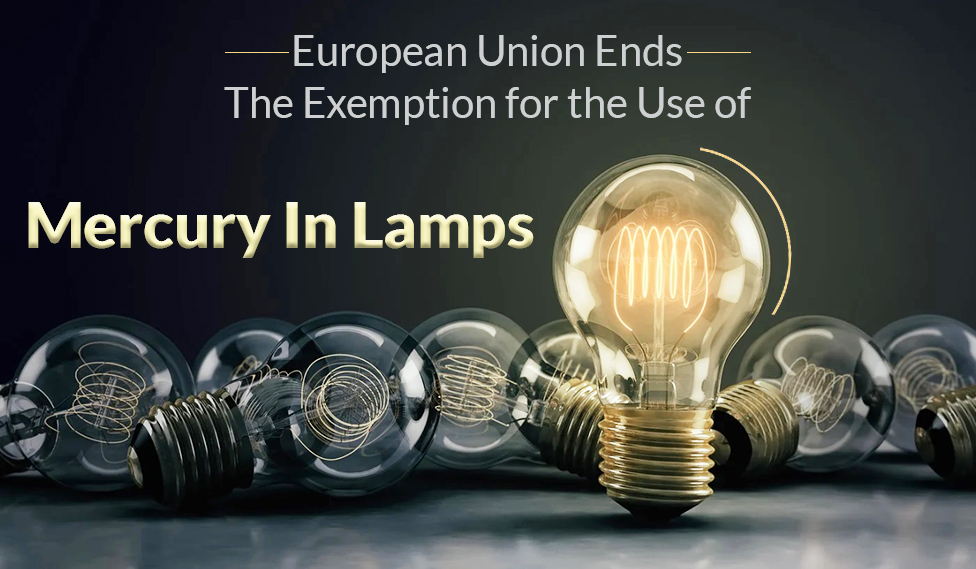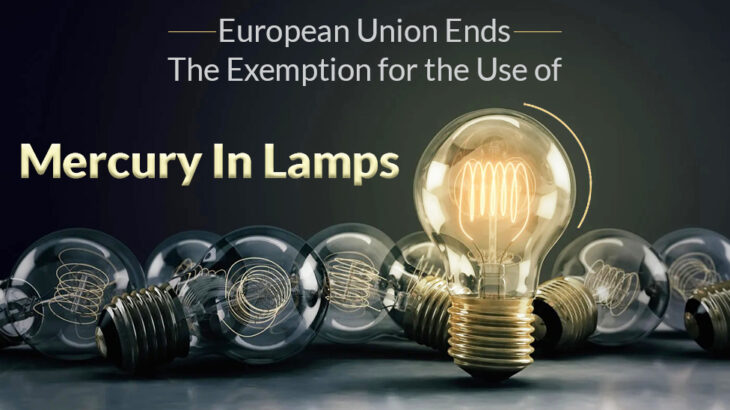
Restriction of Hazardous Substances Directive (ROHS) is one of the European Union’s major directives to regulate the consumption of electrical products. The European Government issued this directive in February 2003 by restricting the inclusion of a specific hazardous chemical substance in electrical and electronic equipment (EEE) production. The following are the ten substances restricted by the European nations. They are,
- Cadmium (Cd)
- Mercury (Hg)
- Lead (Pb)
- Bis(2-ethylhexyl) phthalate (DEHP)
- Polybrominated biphenyls (PBB)
- Hexavalent chromium (Cr6+)
- Polybrominated diphenyl ether (PBDE)
- Diisobutyl phthalate (DIBP)
- Dibutyl phthalate (DBP)
- Butyl benzyl phthalate (BBP)
The electrical and electronic equipment (EEE) whose hazardous substance content exceeds the specified limit is not put on the European market. However, there are specific exemptions in case of time limitations and applications granted by the European Union commissions.
Directive exemption for mercury usage:
In the directive, there is a restriction for mercury in the category of specific lamps. However, the restriction for the use of mercury will be discontinued as there are plenty of safe alternatives for mercury-free fluorescent lamps.
Hence, the European Union has issued 12 acts for the usage of mercury in fluorescent lamps on 16th December 2021. The primary focus of this set of delegated acts is to improve the protection of the environment and human health from hazardous substances.
With the help of mercury-free lamps, the European government is determined to safeguard the environment and promote innovation that benefits the economy and paves the way to zero pollution conditions.
Similarly, the European Union grants a transition period of 12-18 months to the manufacturers to adapt to the new set of instructions. However, the appropriate mercury-free substances are not reliable for the particular lamp groups that find application in medicine and industry. Thus, they are produced under the time-limited exemptions under the commission.
New regulations:
The rules adopted by the European Commission under the ROHS directives are listed below.
ROHS mercury exemption is applicable on:
- Compact fluorescent lamps for special purposes.
- Linear fluorescent lamps for general lighting purposes.
- Compact fluorescent lamps for general purposes with a lifetime equal/above 20,000.
- Linear tri-band phosphor lamps.
- Other low-pressure discharge lamps.
- Fluorescent lamps for other general lighting and special purposes.
- Cold cathode fluorescent lamps and external electrode fluorescent lamps for special purposes.
- Other high-pressure sodium lamps for general lighting purposes.
- High-pressure sodium (vapor) lamps with improved color rendering index.
- Other discharge lamps for special purposes.
- Metal halide lamps.
- Compact fluorescent lamps for general purposes.
Mercury is one of the chemical compounds with neurotoxic effects. But constant exposure to these elements can affect the brain, lungs, immune system, and kidneys of living things.
The ROHS directive is one of the benchmarks set by European nations and adapted by 50 more countries to reduce the toxic substance in EEE. Thus, the ROHS directive and the new twelve delegated acts trigger innovation in using mercury-free alternatives and the use of the restricted substance in limited cases.
Hence, you need an expert who is well-versed with the regulations amended by various commissions. So, outsource to Sunstream to get a reliable solution from designing to detailing your products as per the ROHS and REACH compliance requirements. Talk to our experts today!





 +1.585.935.7123
+1.585.935.7123 +91-804-148-6861
+91-804-148-6861